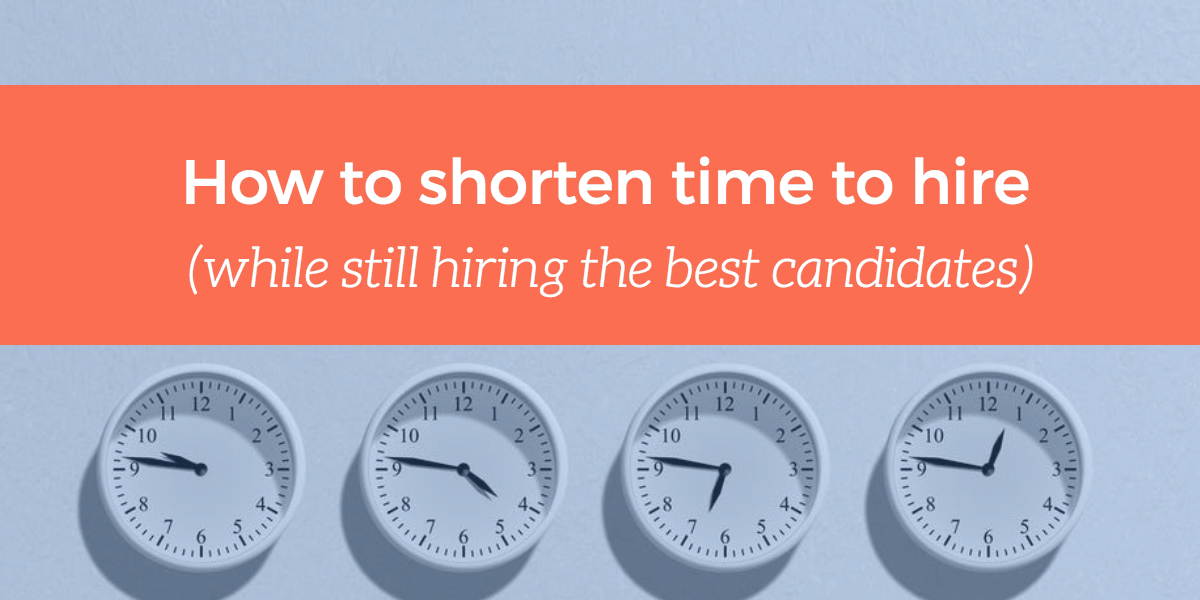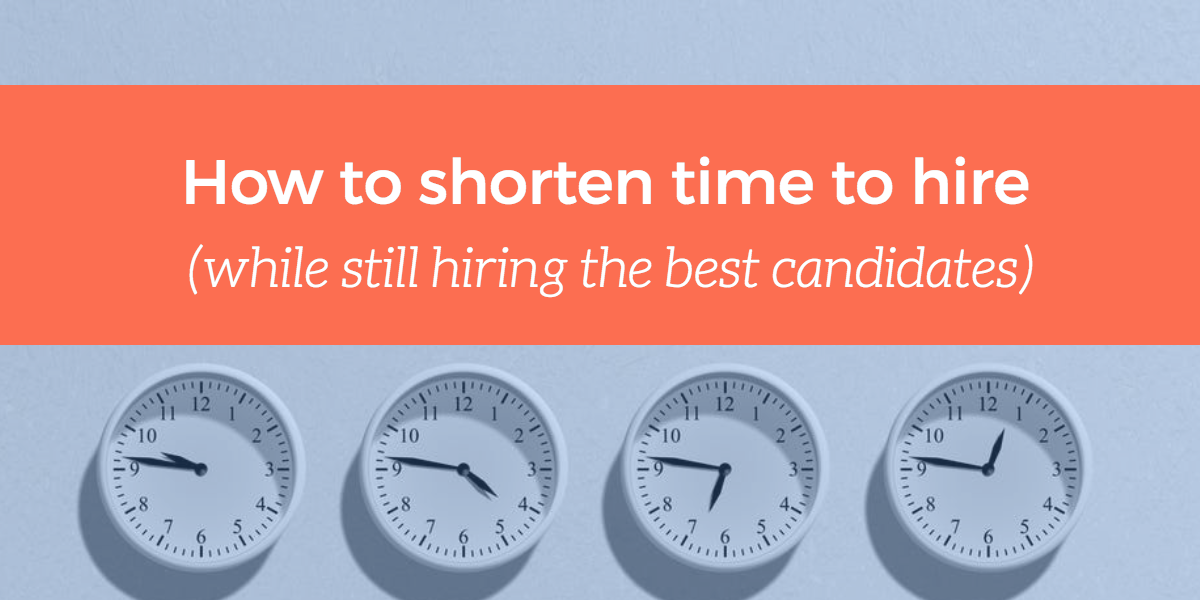
Taking too long to hire the right person for a vacant position is almost guaranteed to cause frustration for all parties involved. The best job candidates won’t hang around for an impossibly long vetting process, and may accept a position elsewhere before you get the chance to offer them a job. Meanwhile, employees at your company will have taken on additional tasks to keep things running smoothly, leaving them susceptible to burnout. Every day the position remains unfilled, the company misses out on full productivity.
But it does no good to hire quickly if you’re not hiring the right people. Cutting corners to speed the process along increases the likelihood that you’ll make an ill-informed hiring decision. To stay ahead in a competitive talent market, the most successful hiring managers have to be able to identify the best candidate for the job quickly, and then take decisive action to get them hired.
Sounds like a tall order, right? But with some smart tweaks to internal processes and messaging, it’s possible to speed the hiring process along without having to sacrifice the quality of employees you’re adding to your team. Here’s how:
Four strategies to reduce time to hire
Find the snags
You can’t improve what you don’t quantify, so the first step will be to gather some baseline data. Look at the past six to twelve months of hiring patterns to answer these questions:
- What’s the average number of days between the date a position is listed and the date a candidate accepts an offer?
- Which steps in the hiring process (initial screening, background checks, interviews, salary negotiations) are taking the most time?
Once you know where the slowdown is coming from, you can make an action plan to address those roadblocks. Some solutions are easy to implement, and might save you hours or days of tedious work. For example, if playing phone tag to schedule interviews is taking several days, try using a mobile scheduling app to automate the process. If background checks are eating up too much time, consider outsourcing that task to a third party. Whatever it is that’s holding the process up, there’s likely a workable solution that can help you speed things along.
Maintain a pipeline of quality candidates
The best time to reach out to qualified candidates is well before you even need to hire someone. Unforeseen resignations or emergency medical leave can take companies by surprise. That’s why it’s important to keep in regular contact with a network of good potential employees.
Attending industry events or meetups is a great way to develop loose connections with talented people. When the time comes to hire someone, these acquaintances can come in handy, either as job candidates or as an introduction to other skilled candidates.
Alternately, you can outsource this task to a recruiter or get your existing employees involved in the search with a referral program. Both of these options widen the network of possible candidates and provide incentives for making introductions to qualified job seekers.
Double-check your job postings
If you’re not getting enough qualified applicants for a job, it might be time to comb through the job description. Is every skill listed a non-negotiable, or can some of them be taught on the job? Don’t let the perfect be the enemy of the good; hiring a teachable candidate who meets 85% of your requirements and can start right away is probably a better choice than continuing to wait for the elusive candidate who meets every single listed requirement.
It’s also important to make sure the wording on your job description isn’t subtly discouraging qualified candidates from applying. Unconscious bias can creep in when writing job descriptions, and gendered or other coded language can appear even with the best of intentions. This factor has a bigger effect than you might guess: data by ZipRecruiter shows that gender-neutral wording can increase the total number of applicants by 42%. Using a tool like Textio to point out your blind spots in this area can help level the playing field and speed up the search for the right candidate.
Sell your company on your careers page
When you’re interviewing a high-quality candidate, you’re probably not alone; the odds are good that they’re looking at other companies as well. It’s crucial that you put your best foot forward and show them why they should want to work at your company.
Talk up your company’s culture and benefits on your careers page. What makes it an exciting and positive place to work? What unique benefits do you offer? Do you have a particularly generous vacation or flexible work policy? Showing candidates why they should want to work with your company instead of the many other places trying to hire them can help you seal the deal quicker and get your new hire excited to join your team.
Reducing your average time to hire doesn’t have to mean hiring sub-par candidates. By implementing these strategies, you can maintain the quality of employees in your workplace without experiencing (or inflicting) the frustration of a long hiring process.
Want to learn more about hiring and other HR best practices? Subscribe to our blog to get weekly updates sent straight to your inbox!
